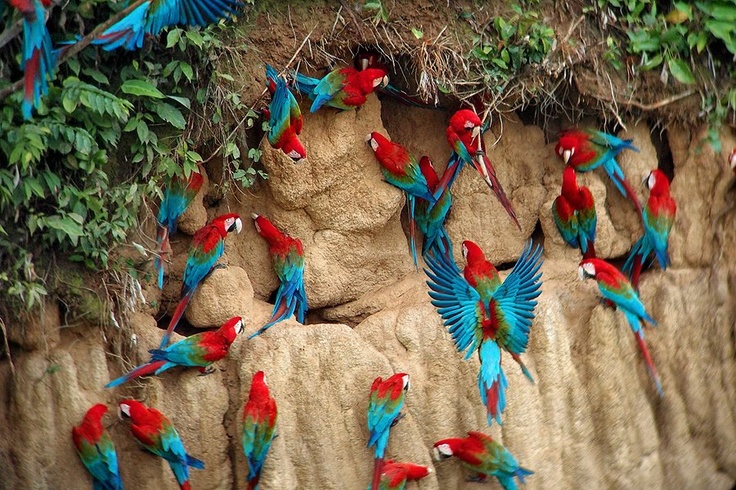Saving Peru’s macaws

The Peruvian Amazon is home to one of the region’s most breath-taking and iconic creatures, the macaw.
Since the 1960s, the number of the brightly-coloured rainforest birds has severely declined. There are 16 macaw species, down from 20, left in the wild today and all the remaining species populations are in decline due to deforestation and a booming illegal pet trade.
TechKnow‘s Phil Torres heads to Peru’s Tambopata National Reserve, to meet a group of scientists studying macaws in the wild, who hope their research will help save these creatures from extinction.
The team is unlocking the mysteries of how these birds live in the wild – how they mate, reproduce, raise their young – information vital to conserving them.
Part of the researchers’ field work involves climbing the tall, old-growth trees where macaws like to build their nests. But these trees are in decline so the scientists are using manmade nests to help macaws raise their young. We see how the scientists collect the chicks, weigh, photograph and examine them – including taking food samples so they know what they’re eating – to monitor their health all before they fledge – develop the strength in their wings to take flight.
Macaws are known as “umbrella species”, explains Torres, and making the correct decisions in protecting them means protecting other species in the rainforest as well as their habitat.
Torres, an entomologist, also checks in on a spider which builds a fake decoy spider suit, the wandering spider, the deadliest in South America, and makes some first discoveries. He observes the interaction between ants and a type of butterfly on young bamboo plants. The catapillar feeds the ants and in turn is protected by them, but what is unlike any other species, is that when it becomes a butterfly – it looks like the ants and tricks them out of their food.
News Source: Al jazeera

